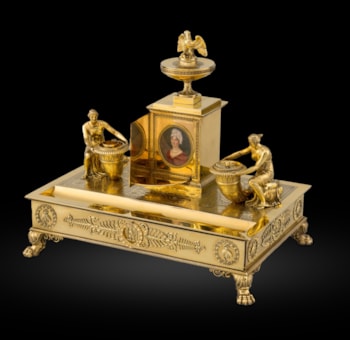Andrew Fogelberg
No record of apprenticeship or freedom. His name suggests a Swedish origin and possibly arrival in this country already trained as a goldsmith. First appears in London as plateworker, Church Street, Soho, in the Parl. Report 1773. His mark alone was therefore presumably entered in the missing register a little before this. Second mark entered as a plateworker, in partnership with Stephen Gilbert, July 1780. Address: 29 Church Street, St Anne's Soho. Heal records the partnership at this address until 1793.; also, Fogelberg alone till 1800. There is however some confusion with the mark of Alexandra Field which may have led to false assumption to the length of his career. Either alone or with Gilbert his productions show an elegant, restrained classicism, particularly in his speciality of the use of small cameo-like medallions based on the Tassie paste gems popular in England at that time. C.C.Oman has pointed out the parallel use of such decoration in Sweden, suggesting Fogelberg's influence returning to his country of origin, (Apollo, August 1947). John Samuel Hunt a partner in the firm Storr & Mortimer and Paul Storr’s nephew, referred to Storr’s “foreign master”, probably alluding to Fogelberg, although as we know there in fact is no formal apprenticeship agreement. Nevertheless, it is possible that between 1784 and 1791 Storr worked in Fogelberg’s’ workshop while apprenticed to the victualler Rock, and there learned the various processes of silver design, manufacturing and business management. As a foreigner Andrew Fogelberg would not have been able to take on apprentices in formal agreement, hence Paul Storr’s formal indenture with William Rock. Undoubtably Fogelberg gave Storr the grounding in specialized industrialization of the time. Eventually it would seem that Fogelberg sold his business to Storr in 1796 and moved to live in Hampstead.




































































